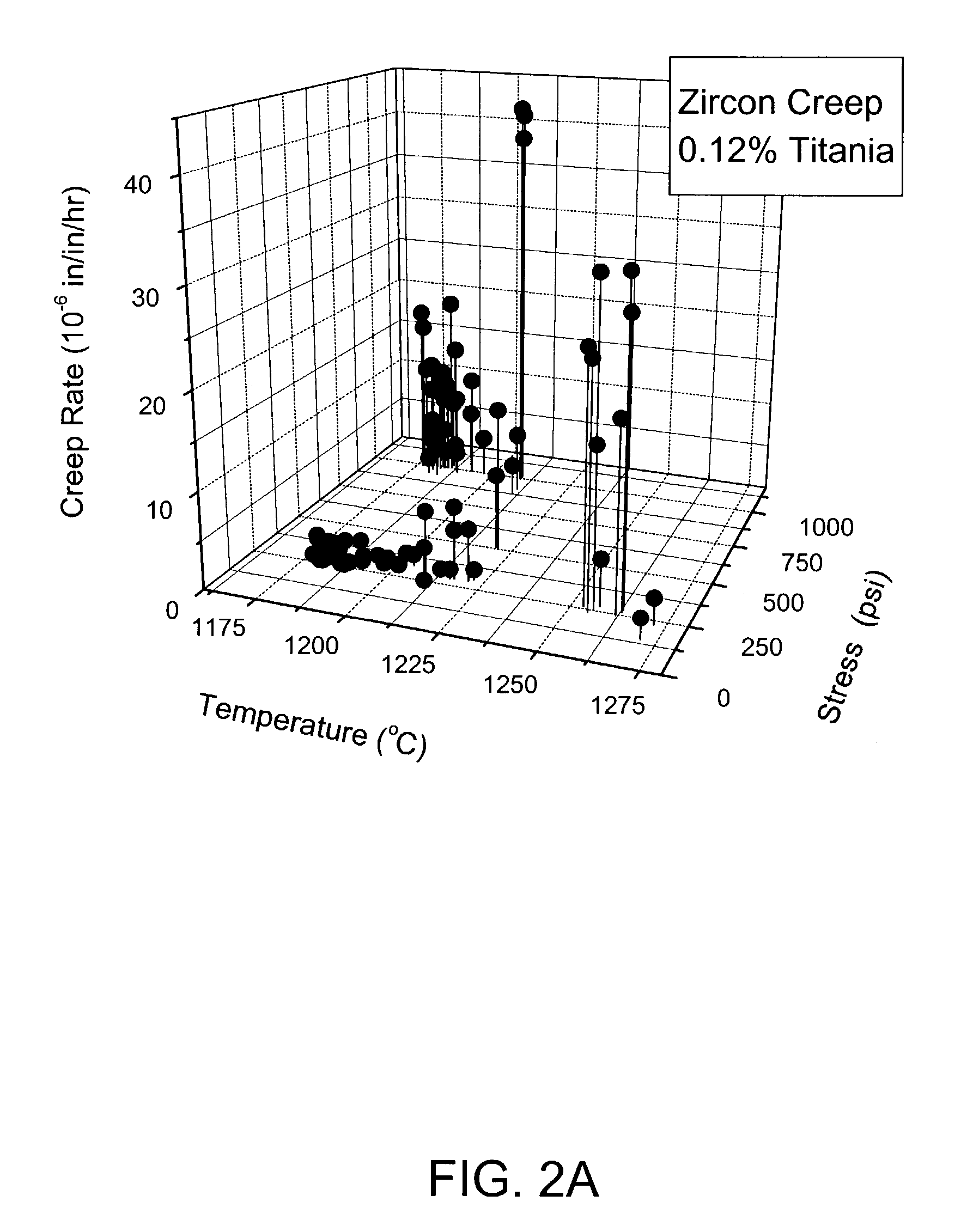Sag control of isopipes used in making sheet glass by the fusion process
- Summary
- Abstract
- Description
- Claims
- Application Information
AI Technical Summary
Benefits of technology
Problems solved by technology
Method used
Image
Examples
Embodiment Construction
[0036]As discussed above, the present invention relates to the use of zircon refractories to produce isopipes for use in a fusion process where the zircon refractory has a TiO2 content greater than 0.2 wt. % and less than 0.4 wt. %.
[0037]Such a TiO2 content causes the isopipe to exhibit reduced sag as a result of the refractory having a lower mean creep rate than zircon refractories currently used in the art. For example, the zircon refractory can have a mean creep rate at 1180° C. and 250 psi substantially less than 0.5×10−6 inches / inches / hour.
[0038]In addition, such a TiO2 content also causes the refractory to have a 95% confidence band (CB) for said mean creep rate (MCR) which is less than 50% of the mean creep rate, i.e., CB / MCR<0.5. Such a confidence band reduces the chances that the zircon refractory of a particular isopipe will have an abnormally high creep rate and thus cause the isopipe to have a short lifetime as a result of exhibiting unacceptable sag prematurely.
[0039]Th...
PUM
| Property | Measurement | Unit |
|---|---|---|
| Temperature | aaaaa | aaaaa |
| Fraction | aaaaa | aaaaa |
| Pressure | aaaaa | aaaaa |
Abstract
Description
Claims
Application Information
 Login to View More
Login to View More - R&D
- Intellectual Property
- Life Sciences
- Materials
- Tech Scout
- Unparalleled Data Quality
- Higher Quality Content
- 60% Fewer Hallucinations
Browse by: Latest US Patents, China's latest patents, Technical Efficacy Thesaurus, Application Domain, Technology Topic, Popular Technical Reports.
© 2025 PatSnap. All rights reserved.Legal|Privacy policy|Modern Slavery Act Transparency Statement|Sitemap|About US| Contact US: help@patsnap.com



